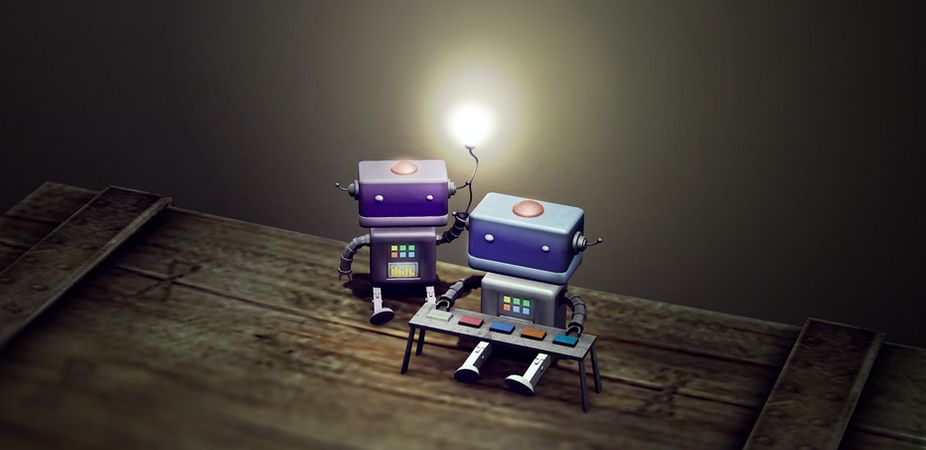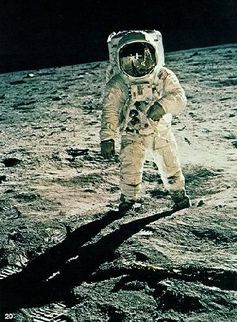
Rise of the Google Machines: The Robotics Companies Involved (Op-Ed)

This article was originally published at The Conversation. The publication contributed the article to LiveScience's Expert Voices: Op-Ed & Insights.
Google recently acquired eight high profile start-up robotics companies, providing strong evidence of a strategy to create breakthrough applications for robotics over the next decade. This strategy is most likely to concentrate on manufacturing and logistics.
Bringing these companies together, Google will need to find synergies between diverse organisations and personalities. This mission will be headed by Andy Rubin, who previously managed the successful Android operating system for mobile devices.
Rubin describes Google’s highly ambitious goal of finding technically and economically viable applications for robotics as a “moon shot”: a highly concentrated effort of an integrated team to create landmark achievements in a field. The mission to put a man on the moon is one clear precedent.

There are many other possible analogies for Google’s robot “moon shot”. Journalist Tom Green, writing in Robotics Business Review, compares Google’s contribution to the robotics industry to the US Defense Advanced Research Projects Agency’s (DARPA) pivotal role in establishing the founding technologies of the internet.
Google’s project might also be compared with Atari research lab, formed in the 1970s to generate innovations in computer game and entertainment technologies. (Unfortunately this did not prevent the massive failure of the company in the mid-1980s.)
An even less appealing analogy is the Manhattan Project that created the atomic bomb in the 1940s. Considering the role of the US military in funding and fostering robotics research, the parallel is not so far off.
Sign up for the Live Science daily newsletter now
Get the world’s most fascinating discoveries delivered straight to your inbox.
Xerox PARC is another corporate that has been highly successful in innovating in the domain of office technologies, but is known most for its failure to transfer research prototypes to viable products.
In expanding Google’s investments in robotics, Rubin will face the challenge of integrating the companies that form Google’s moon shot at Palo Alto, California. What is notable about many of these companies is they are either interdisciplinary in orientation, or highly specialised.
Many of the companies began as spin-offs from university robotics research. The companies that had a spin-off culture will need to transition into being part of a large organisation, with the politics that this entails.
So who has Google bought and what do they do?
Bot & Dolly
Bot & Dolly is largely a product of the film industry, creating robotic systems to control cameras in movies such as Gravity.
This film included sequences that began as computer-generated imagery, which was matched with live action sequences using robotic cameras. In the clip below, robot cameras captured the astronaut’s faces as they spun around in zero gravity.
These images were mapped into the computer-generated sequence. Experimenting at the intersections of cinema, robotics and stage magic, Bot & Dolly produced a stunning performance piece called Box.
Box uses two robots to manipulate screens onto which high definition projectors present geometrical and op-art inspired patterns. A human performer interacts with the screen images, creating a seamless hybrid of multiple disciplines.
Autofuss
Bot & Dolly’s design studio arm Autofuss emphasises its collaborative approach “colliding visual artists with programmers, engineers with designers, storytellers with illustrators, architects with machinists”.
It has produced promotional videos for Google, Microsoft and Adobe. These promotions make heavy use of robotic cameras, motion design, animation and live action production.
Meka Robotics
Meka is another university spin-off company, coming out of the Massachusetts Institute of Technology Computer Science and Artificial Intelligence Laboratory in 2006. One of their aims is to create highly agile robots that can run quickly over uneven ground.
Holomni
Holomni is a design firm that specialises in highly controllable caster wheels that can position robots with 360 degree precision. Such a specialised company is likely to produce devices that slot well into any robot that needs precise mobility.
Redwood Robotics
Redwood Robotics is a Silicon Valley company specialising in robotics arms. It is a 2012 spin-off from Meka Robotics, Willow Garage and SRI International, and aims to create a:
“new generation arm” for robots […] that does for robotics what the Apple II did for computers: get the hardware out of factories and into homes.
Like Holomni, the strategy is the concentrate on one particular component that can be used in a variety of robot applications. Whether Google will pursue this goal of providing wheels and arms to the wider industry, or not, it not yet clear.
Industrial Perception
A spin-off from high profile robotics company Willow Garage, Industrial Perception Inc produces 3D visual perception systems for applications such as unloading trucks and feeding parts.
Maybe not so different to human deliveries …
They aimed to produce product-level robots that could work at a level and speed comparable to humans unloading trucks (see Casey Nobile’s article in Robotics Business Review). Industrial Perception’s goals seem in line with Google’s goals with their move into robotics.
Boston Dynamics
Boston Dynamics has achieved a high profile for its robotics projects by posting popular videos of its intimidating robots Big Dog, Cheetah and PETMan.
Their projects have been funded by the US Defense Advanced Research Projects Agency (DARPA).
Boston Dynamics' ‘Cheetah’ runs faster than Usain Bolt.
Boston Dynamics was founded in 1992 by Marc Raibert, a former professor at the Massachusetts Institute of Technology. It was the eighth and last of the companies to join Google so far.
Schaft
Schaft is a Japanese engineering company that spun off from the University of Tokyo. It recently won the DARPA Robotics Challenge, a competition for robotic performance funded and supported by DARPA.
The goal of the competition was to complete tasks to a rescue robot that could drive a vehicle, walk on uneven ground, walk up an industrial ladder, clear debris, open a door, cut through a wall, open a valve and use a hose. The only non-US competitor, Schaft’s robot scored 27 out of 32 points and beat the Boston Dynamics team by some margin.
Schaft in action.
Robot cultures
The Googlefication of robotics research is likely to represent something of a cultural shift for the organisations and employees involved. However, there are common stories for many of the companies. The grounding of much of the research in universities is one clear shared experience.
Each of the companies above has highly specialised applications and well-formed visions. Google wisely selected companies on the basis of some firm instrumental orientation and corporate vision.
In spite of the growing investments in robotics, longer term questions about the future models for robotics in everyday life remain open. How key components — from machine vision to directional wheels, from automated cameras to humanoid rescue robots — might combine into transformative applications is yet to be seen.
Also yet to be known is the impact of Google’s taking cream from the top of a still-young robotics industry.
Chris Chesher writes a blog on the cultural aspects of robotics: Following Robots.
Chris Chesher does not work for, consult to, own shares in or receive funding from any company or organisation that would benefit from this article, and has no relevant affiliations.
This article was originally published at The Conversation. Read the original article. The views expressed are those of the author and do not necessarily reflect the views of the publisher. This version of the article was originally published on Live Science.











